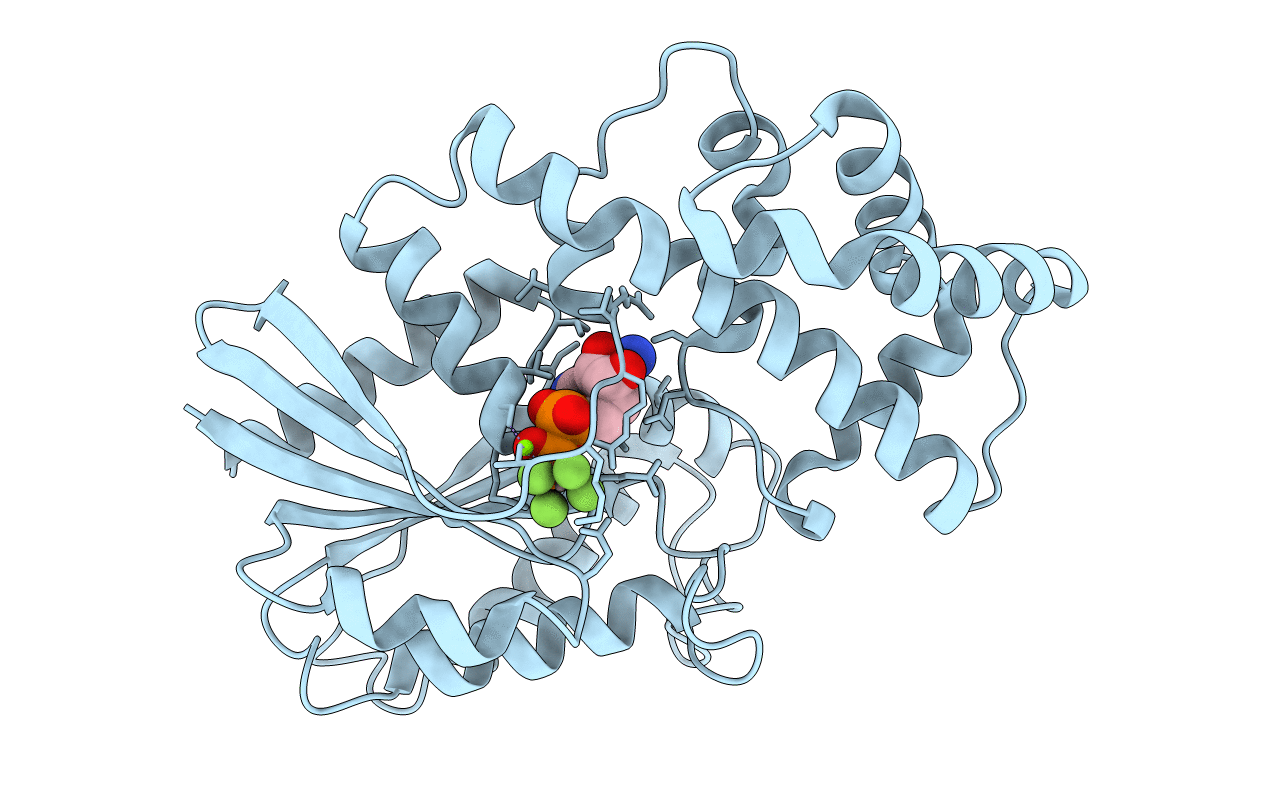
Deposition Date
1994-11-11
Release Date
1995-03-31
Last Version Date
2024-02-07
Entry Detail
PDB ID:
1GFI
Keywords:
Title:
STRUCTURES OF ACTIVE CONFORMATIONS OF GI ALPHA 1 AND THE MECHANISM OF GTP HYDROLYSIS
Biological Source:
Source Organism:
Rattus norvegicus (Taxon ID: 10116)
Method Details:
Experimental Method:
Resolution:
2.20 Å
R-Value Free:
0.28
R-Value Work:
0.21
R-Value Observed:
0.21
Space Group:
P 32 2 1


